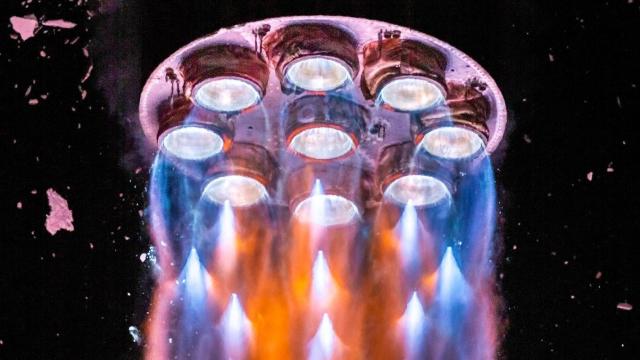After two failed launch attempts earlier in the month, Terran 1 — a rocket primarily built from 3D-printed parts — finally managed to take off on Wednesday. The rocket never reached orbit, but key milestones met during the short-lived mission could set Relativity Space on the path to future success with its potentially revolutionary launch system.
Terran-1 is 85% 3D-printed by mass, but it’s also powered by a liquid methane-oxygen propellant known as methalox. This novel rocket fuel combined with the nighttime launch set the stage for a fascinating and rare site: a bright blue plume.
Go for launch
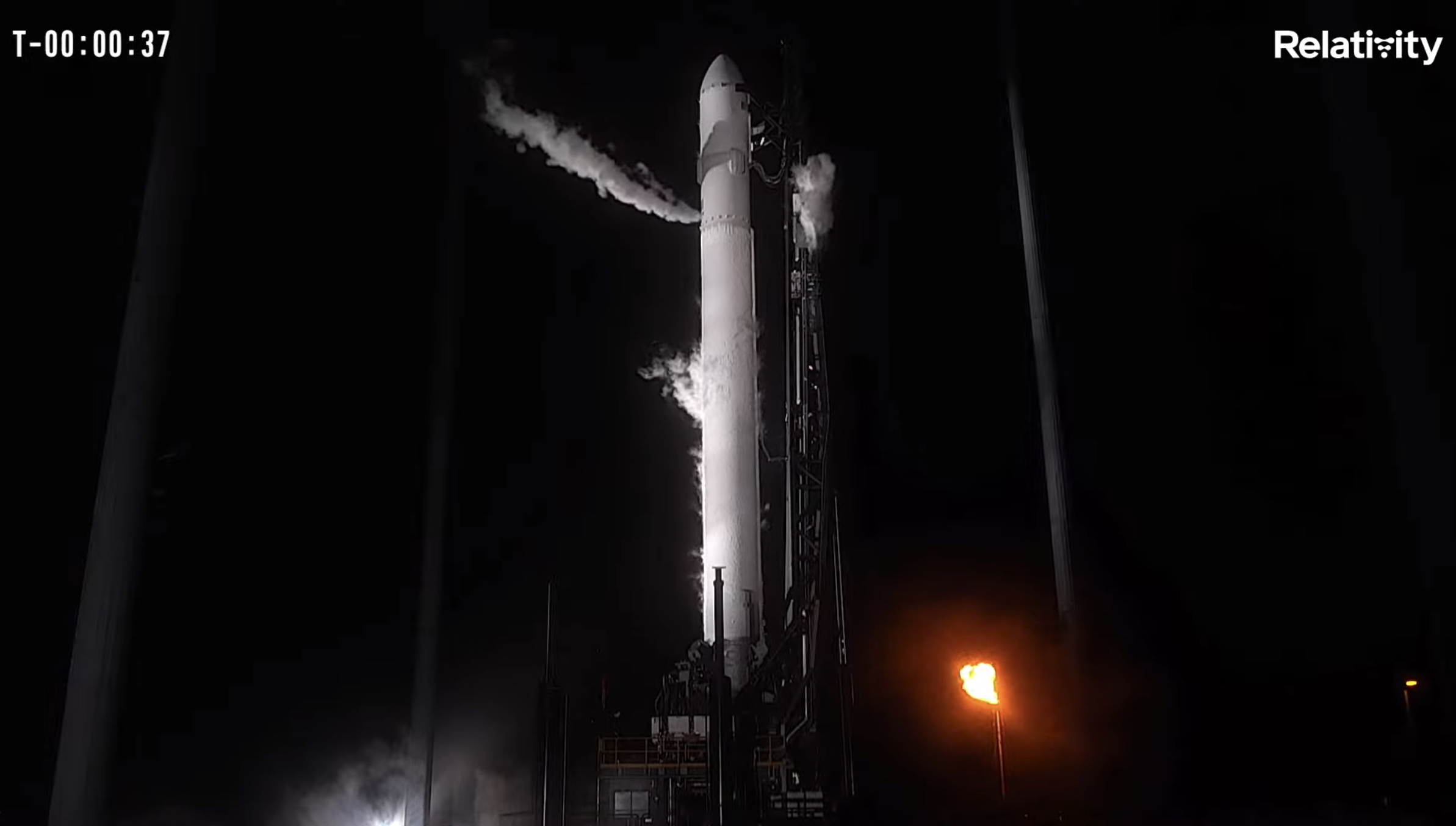
Wednesday’s launch of Terran 1 was originally slated for 10:00 p.m. ET, but a series of delays, including a boat that carelessly wandered into restricted space, pushed the launch back further into the night. The rocket, standing 33.53 m tall (33.5 meters), finally blasted off at 11:25 p.m. ET from Launch Complex 16 in Cape Canaveral, Florida. The image above shows the rocket with 37 seconds left in the countdown clock, and with a flare stack in the background.
The moment before ignition

The Terran 1 first stage is powered by nine 3D-printed Aeon engines, each capable of producing 23,000 pounds (10,430 kilograms) of force and together exerting around 207,000 pounds (98,900 kg) of thrust. Here, the alloy engines are seen mere milliseconds prior to ignition. Relativity Space uses a propriety technique to 3D-print each engine, which consists of fewer than 100 individual parts.
Liftoff!
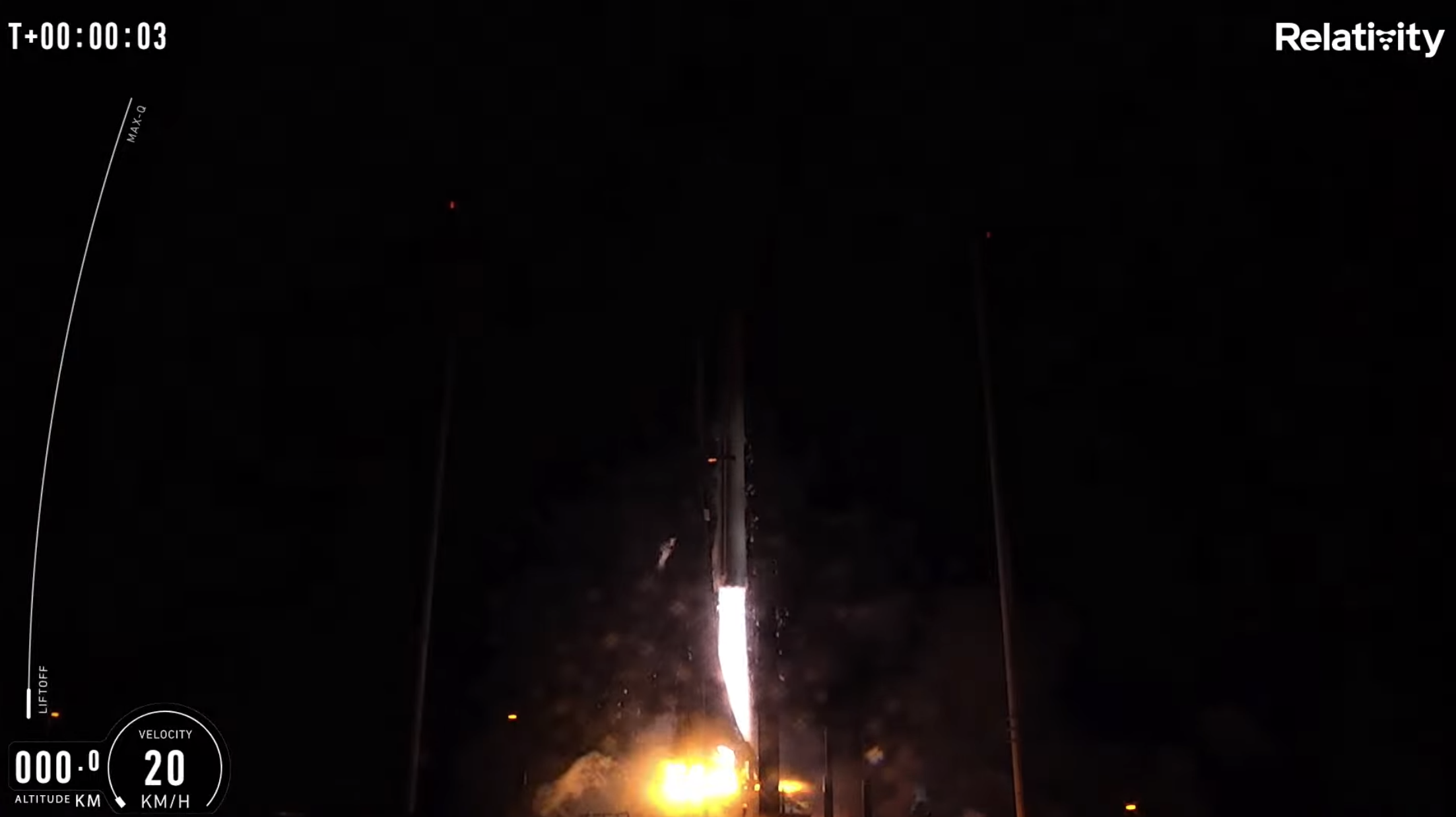
Terran 1, weighing 9.3 metric tons without propellant, failed to leave the launch pad on two previous attempts, the first on March 8 and the second on March 11. The third time was the charm, with the experimental rocket finally lifting off on the evening of March 22.
Good luck, have fun
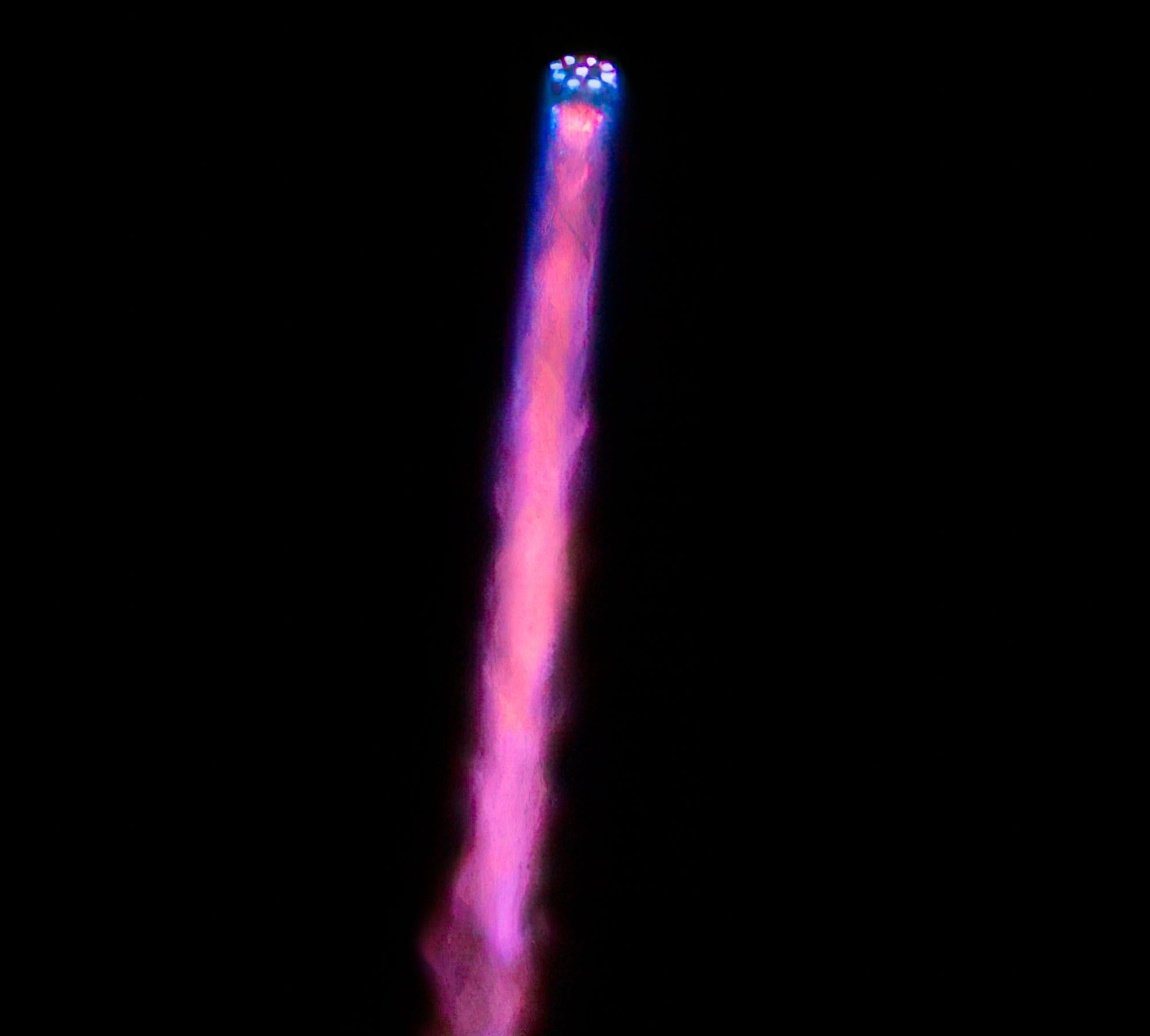
Relativity Space kept expectations low for this first flight of Terran 1, and for good reason. No private company has ever successfully launched a rocket to orbit on its first flight, let alone a rocket as experimental as this one. Terran 1 is 85% 3D printed, making it the largest 3D-printed structure ever built, according to the company. What’s more, the Aeon engines are powered by methane, and no rocket powered with this propellant has managed to reach orbit. Terran 1, sadly, is now the second methane-fuelled rocket to fail during its inaugural flight, the other being China’s Zhuque-2, which launched on December 14, 2022.
Blue flame
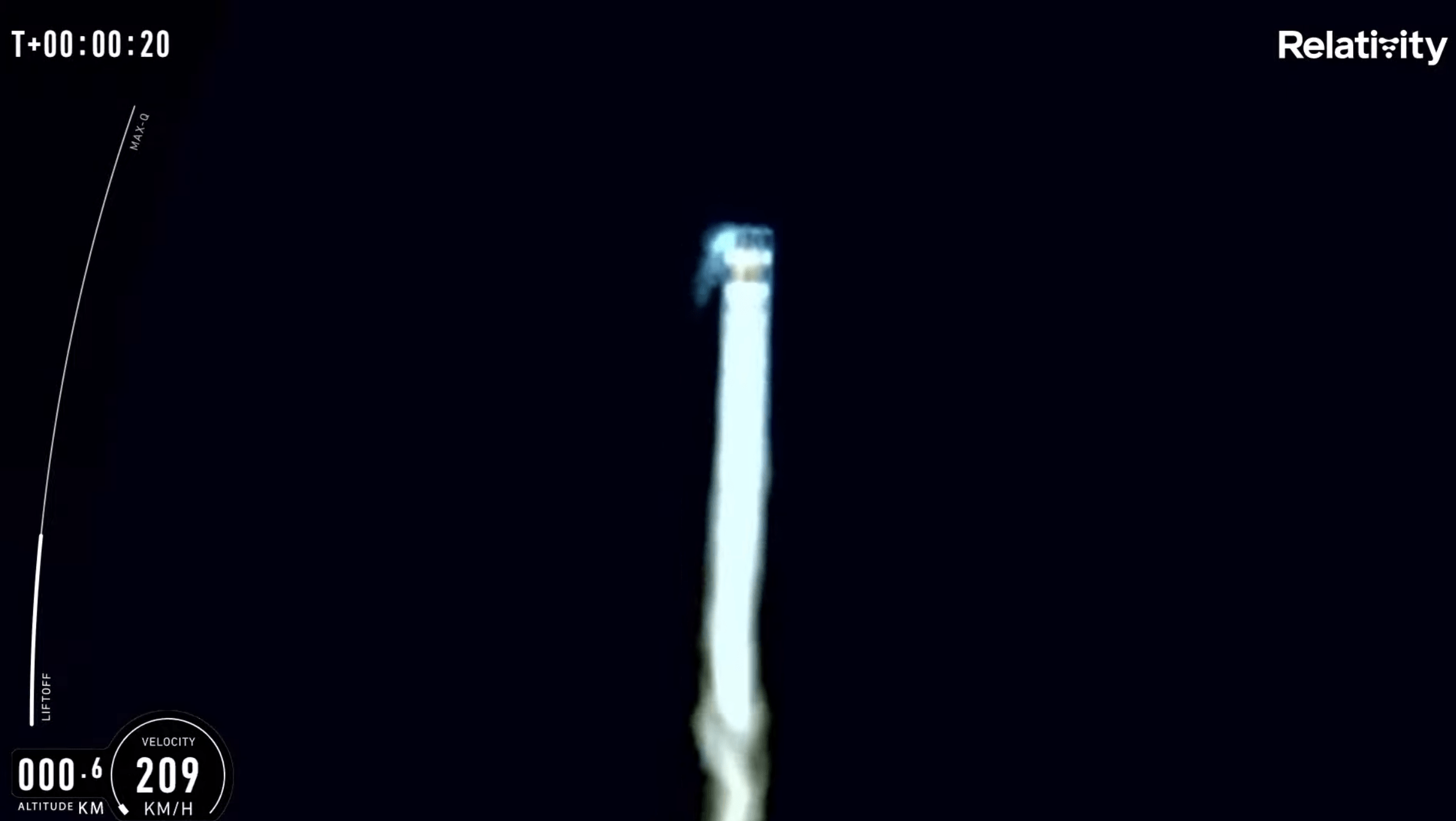
As expected, the methane-powered rocket produced a blue-tinged plume. The mixture of liquid oxygen and liquid natural gas (with methane being the primary component), is “not only the best for rocket propulsion, but also for reusability, and the easiest to eventually transition to methane on Mars,” Relativity Space claims.
Blue arc
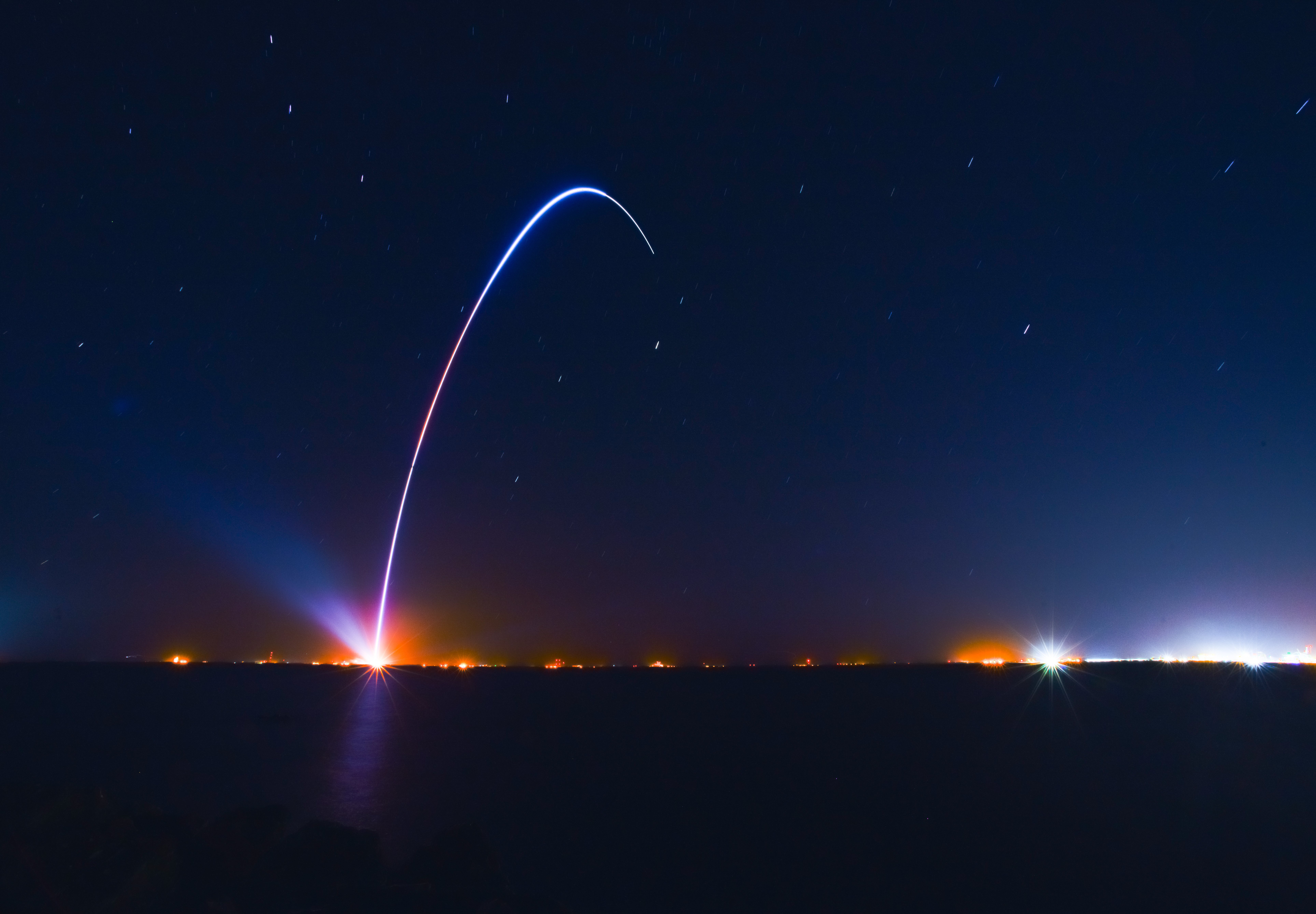
Relativity Space was founded in 2015 by Tim Ellis and Jordan Noone — two former engineers with Blue Origin. The two-stage Terran 1 rocket is designed to deliver small payloads weighing no more than 2,756 pounds (1,250 kilograms) to low Earth orbit. With an estimated price-per-launch of $US12 ($17) million, the fully expendable Terran 1 would fit somewhere between Rocket Lab’s Electron and SpaceX’s Falcon 9 in terms of cost and capability, according to CNBC.
Max-Q
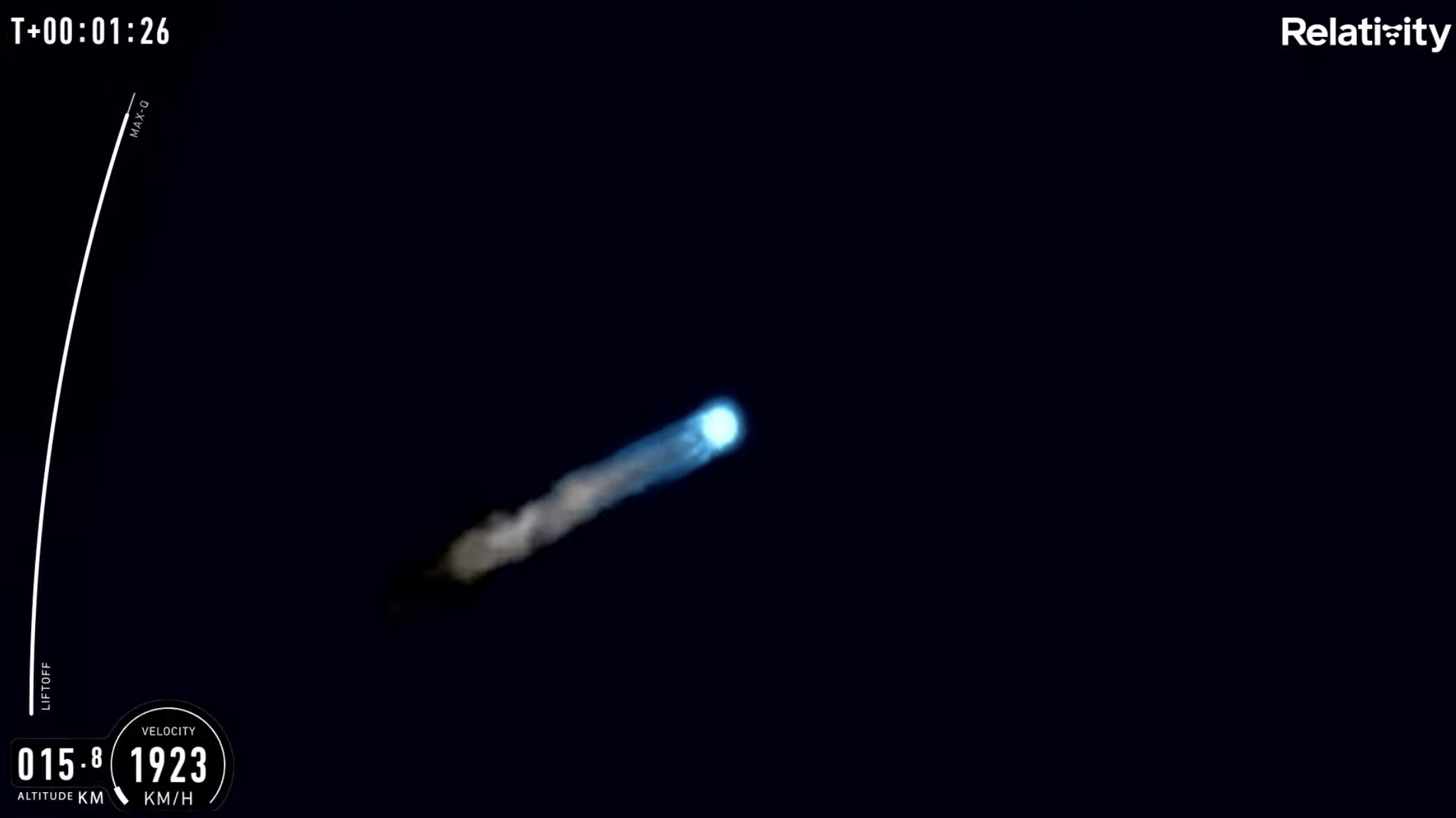
Despite the rocket not reaching orbit, the Good Luck, Have Fun mission did achieve some important milestones for the company. In addition to simply taking flight, Terran 1 managed to survive Max-Q, the moment when a rocket must endure the greatest aerodynamic stresses. Going into the launch, Relativity described survival through Max-Q as the “big inflection” of the inaugural mission, as “passing this point in flight proves our hypothesis: 3D printed rockets are structurally viable.” The image above shows the rocket during this critical stage.
Second engine start and sputter
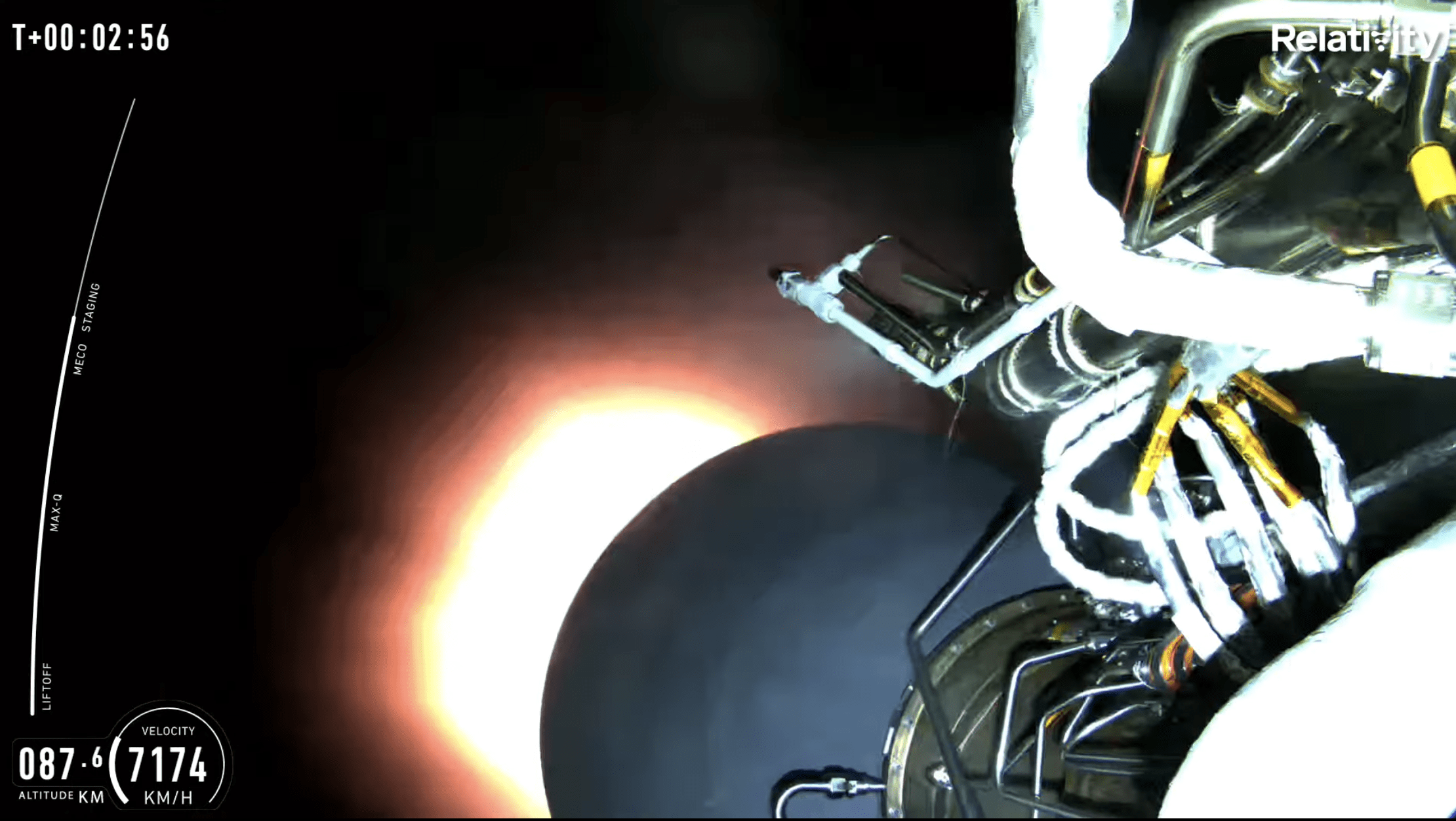
In addition to passing Max-Q, the mission managed to complete main engine cut-off (MECO), stage separation, and the ignition of the lone second-stage Aeon vacuum engine. Roughly three minutes into the flight, however, the second stage engine appeared to sputter and then completely shut off, effectively ending the mission. The upper stage got no higher than around 81 miles (130 kilometers) above the surface and travelled no faster than about 7,403 km per hour (7,400 km/hr), according to on-screen data provided during the webcast. Debris from the spent upper stage presumably fell down onto the Atlantic Ocean, hundreds of miles from the Florida coast. No customer payload was included for this mission, which proved to be a smart decision.
Ground control

With the engine no longer working, the Relativity webcast switched over to a view of the ground team. “No one’s ever attempted to launch a 3D-printed rocket into orbit, and, while we didn’t make it all the way today, we gathered enough data to show that flying 3D-printed rockets is viable,” as Arwa Tizani of Relativity Space explained during the Wednesday’s broadcast. “Today is a huge win, with many historic firsts,” the company tweeted after the launch. “We also progressed through main engine cutoff and stage separation. We will assess flight data and provide public updates over the coming days.”
Big plans

Terran-1 represents a stepping stone rocket for Relativity, as the company is simultaneously developing a fully reusable 3D-printed rocket called Terran-R. In its attempt to revolutionise the industry, Relativity is seeking to build a rocket every 60 days and increase the total proportion of 3D-printed rocket parts to a whopping 95% by mass. But first, the company must get Terran-1 to successfully deliver payloads to low Earth orbit.
